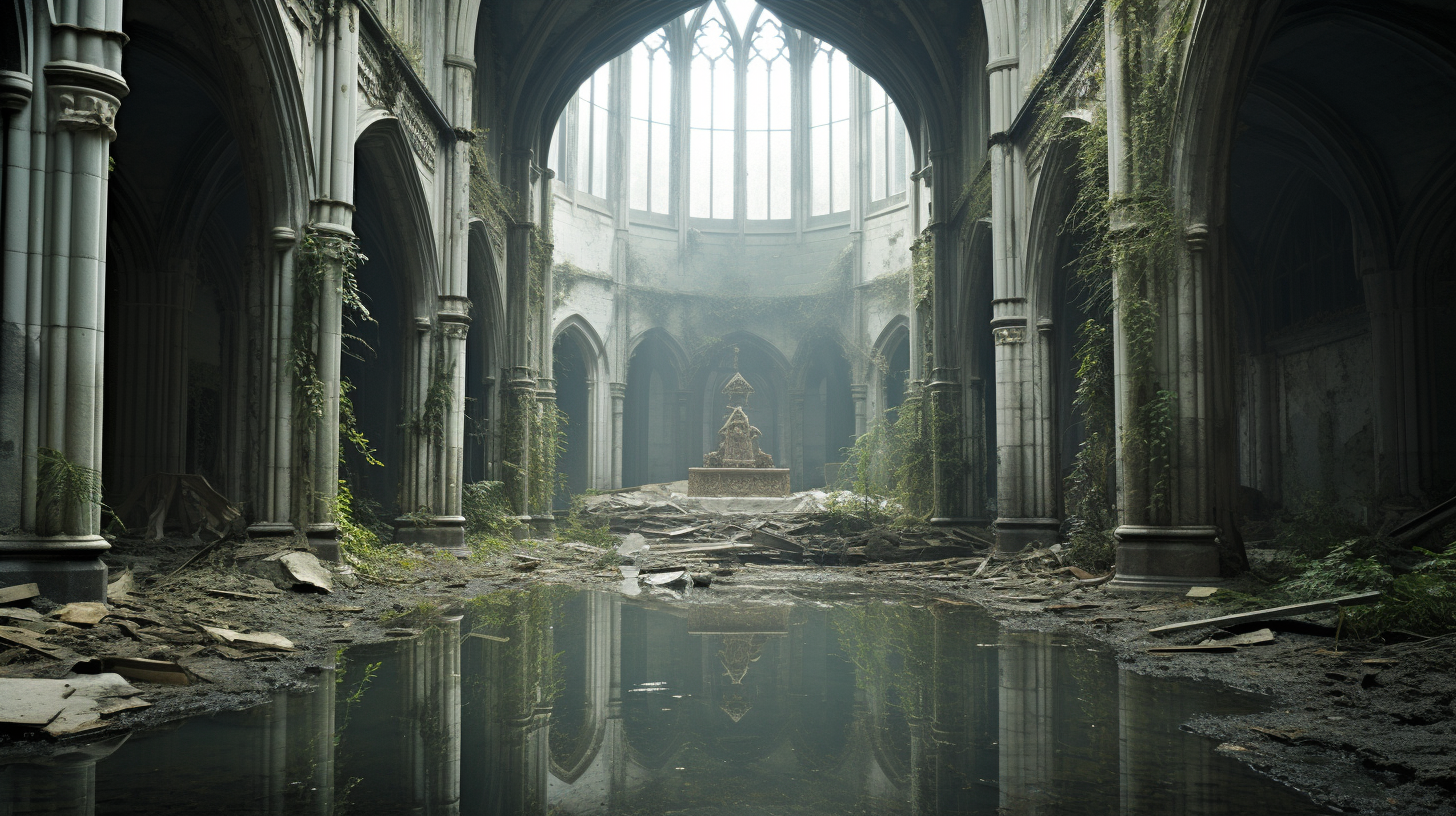Amidst the overgrown foliage, a stone façade of what was once a magnificent cathedral crumbles silently. Its stained glass windows, though shattered, still glint in the relentless sun. This is not the work of age alone but the symptoms of a world rendered inhospitable by humanity’s own making. Abandoned Sanctuaries’ is a journey into the world’s neglected holy grounds – a stark tableau of our planet’s environmental downfall.
The sanctity of these spaces has succumbed to a new religion of neglect. Where hymns once harmonized with the architecture, now the wind howls through empty corridors, as if mourning by nature itself. Sacred icons, laden with history, face decay or have become ensnared in the wild’s reclaim. Statues stare sightlessly over their domains overtaken by wild climate – as if in silent judgment.
Peering through the skeletal remains of a once magnificent abbey in Europe, it’s difficult to imagine the congregations that gathered, the sermons that echoed. The irony isn’t lost: the faith that once addrest to protect and revere Earth’s creation, resident now only in the artifacts swallowed by the relentless tide of nature’s reclamation.
Across the globe, in the tropical wetlands of South America, temples that withstood centuries have met their match in the form of pestilent skies and rising waters. The relentless advance of the water has erased borders, both geographical and sacrosanct. All that remains are stories – half-submerged memories and reflections in the murky depths below.
‘Sanctuaries’, in their essence, were built as a testament to human spirituality and creativity. But as this tour of desolation continues, it’s hard not to notice how these places also mirror the environmental apathy that has led to their demise. The mosaic floors, hidden under a carpet of algae and waste, remind us of the abandonment of stewardship we once vowed to uphold.
In the silence of the sanctuary, there is a message echoing against the cracked walls. It’s not just about the faith that once filled these halls but a reminder of the neglect that emptied them. The fragrance of incense has been replaced by a pervasive mustiness – the sacred urns carry not flowers, but the detritus of a civilization in decline.
It is not just the grand edifices, but also the intimate chapels, the roadside shrines, all reduced to relics not by time, but by our collective amnesia towards the Earth’s crisis. The small temple nestled in a village no longer habitable due to extreme drought, the shrine by the sea swallowed by the ever-rising tides – their fate is not singular but symptomatic of a broader epidemic.
The final chapter of this journey is inevitably one of contemplation. What remains of our vast creative and spiritual legacy is entangled with roots and choked by the very air that sustains life. It’s the juxtaposition that forms the core of our dystopian reality – a cornucopia of wonders, physical and metaphysical, left as footnotes in the annals of an ailing Earth.
The narrative of Abandoned Sanctuaries ultimately serves to remind us of what is lost. Full of once vibrant locations of human faith and reflection, now somber and silent, the tale is entwined with urgency, urging readers to heed the fading echoes of past glories. However, it is more than a lament; it is also a call. A call that, even in the perishing breath of our eco-dystopia, demands accountability and, perhaps, penance for our environmental transgressions.
The finale, though somber, is not void of the indomitable spirit that constructed these now forsaken halls. Even within the stark reality of these pages, the embers of human potential and reverence for the sacred flicker – daring us to envision a divergent path where the sanctuaries of old see light and life once more.
